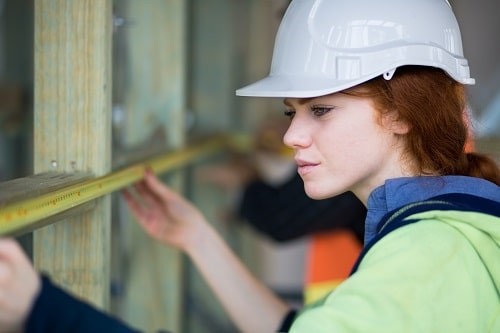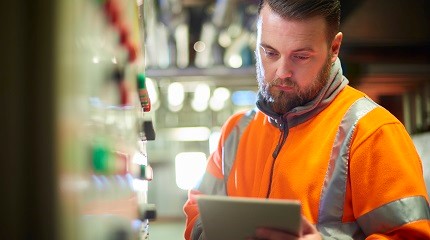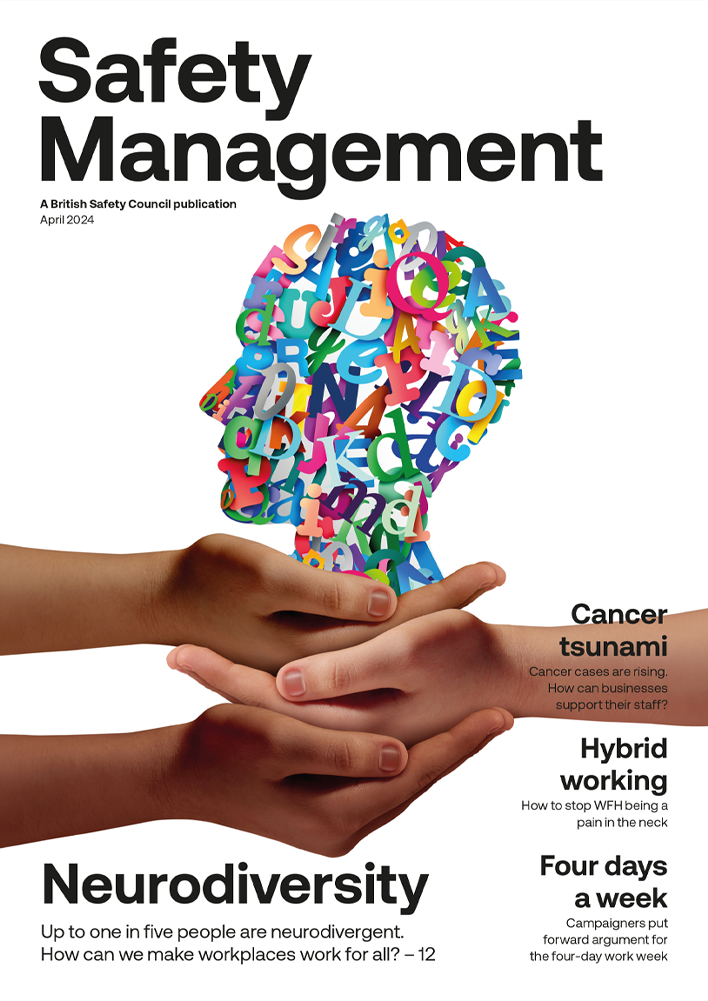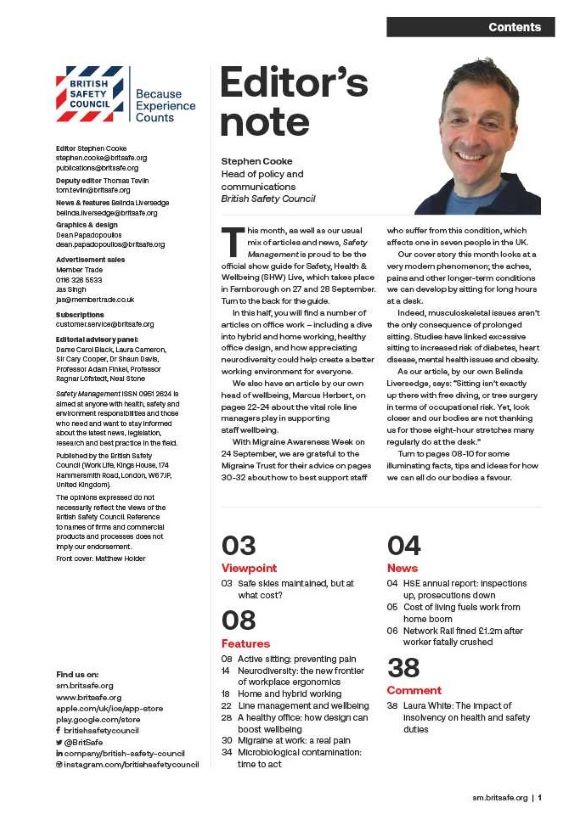When coronavirus is dominating the headlines, it’s easy to forget that 5,500 people will die this year due to past asbestos exposure. Yet, young people working today are also at risk. For Action Mesothelioma Day (3 July), it's time to explore the issue.
Features
Protecting young workers from asbestos
“Just because it’s banned doesn’t mean it’s gone,” says Mavis Nye, a mesothelioma survivor and campaigner for asbestos awareness. “It’s everywhere. It’s in buildings that are forever being pulled down and refurbished, which can make it airborne… We need to educate the young because they think it’s a problem of the past.”
Asbestos is still very much alive and kicking, present in at least half a million commercial properties and a million homes. But as Mavis, speaking to the Guardian (7 July 2019) says, there’s a perception that it only impacts the older generation who would have worked with the material when use was at its peak. However, young people are still at risk today for many reasons.
In his story shared by the UK Asbestos Training Association (UKATA), David Staley, who was diagnosed with mesothelioma aged 39, says: “More people die from mesothelioma in the UK than on UK roads, and it comes from asbestos exposure. This tells me that with asbestos, the dangers of small exposures are very real.”
More at risk from asbestos?
According to the Committee on Carcinogenicity: “The younger a person is when they are exposed, the greater the risk of developing mesothelioma.” This is because the disease has a latency of between 15 and 60 years, so younger people are more likely to live long enough for the disease to manifest itself. Staley is an unusual case in that he has no idea where or when he was exposed. But his case illustrates what we know about the dangers of asbestos.
 The younger a person is when they are exposed to asbestos, the greater the risk of developing mesothelioma
The younger a person is when they are exposed to asbestos, the greater the risk of developing mesothelioma
England’s chief medical officer, Chris Whitty, at a lecture Safety Management attended, said: “Asbestos is one of those chemicals – and there aren’t many of them – for which the only safe amount is zero. The chances [of contracting a disease] are still very concentrated in the people who had really large exposures over a long period of time. But it is possible to have risks from almost minute amounts.”
Young, gifted and intimidated
Every week in the UK 20 tradespeople die because of past exposure to asbestos, according to HSE. But young tradespeople working today are also vulnerable, for many of the same reasons their older colleagues were when they were young.
We know for example, as British Safety Council’s campaign Speak Up, Stay Safe highlighted, how young people are often too intimidated to challenge employers and they may not ‘speak up’ about a safety or health issue for fear of being wrong or blamed.
This is why at UKATA, they are targeting more young people to get training, explains Craig Evans, chief operating officer. “Workers call our hotline and say, ‘I think there’s asbestos on this job but no survey – but if I don’t go, I’ll get sacked or not paid’.”
Employees should not be put in a vulnerable situation at all, but he adds: “If workers are clued up, it’s them then having the courage to say to the boss, ‘we shouldn’t be doing this, it’s against the regulations.’"
Young people can learn where to find asbestos and what it looks like in buildings and in materials on a UKATA course. They will also learn their rights. “If there’s no register, the course teaches them to assume it is asbestos and you can’t work in there”, says Craig.
 Amosite asbestos fibres on a human hair. There is no safe level of exposure.
Amosite asbestos fibres on a human hair. There is no safe level of exposure.
Opening eyes to the risks
Unfortunately, research tells us young workers can’t rely on their employers to do the right thing when it comes to asbestos. In 2014 HSE surveyed 500 construction workers and only a third (30 per cent) were able to identify all the correct measures for safe asbestos working. One in four (27 per cent) thought that opening a window will help keep them safe.
There’s still a shockingly low level of awareness across the board. In two HSE nationwide inspections in 2019, the material breach rate was 53 per cent for respiratory-related issues as well as safety matters.
Worryingly, inspectors didn’t always have time to address health issues. An HSE spokesperson tells us: “Immediate safety failings were so bad on some occasions that health issues had to take second priority at the time of the visit.”
Campaigns are trying to tackle the issue by developing more interesting resources for younger workers, and by thinking of ways to take asbestos out of its historical rut. At IOSH, for its No Time to Lose asbestos campaign, experts have visited several colleges to give talks.
 HSE inspectors haven't been able to address health breaches like asbestos where safety failings are so bad they take priority
HSE inspectors haven't been able to address health breaches like asbestos where safety failings are so bad they take priority
Craig Foyle, former IOSH president, gave a session to young plumbers at Holbeach Academy in Lincolnshire, asking students to walk up and down stairs while trying to breathe through straws to find out what life with respiratory illness is like. “Capturing their attention now is vital before these students start their careers and perhaps get into situations where they’re exposed to materials they don’t recognise,” he said.
In a time where coronavirus is dominating the headlines, it’s easy to forget that 5,500 people will die this year due to past asbestos exposure and that each year there are 18,000 new cases of lung problems caused or made worse by work.
Although HSE says 2020 is the last year for mesothelioma deaths to peak, before numbers decline, we also can’t be sure. In its report Mesothelioma statistics for Great Britain, 2019, HSE admits there’s “no strong empirical basis” for these projections (after 2030) because the extent of asbestos exposure since the 1980s is unknown.
This means we must keep talking about asbestos. David Staley, speaking during his recovery, says: “It’s amazing what you take for granted. Being able to sit up, then get out of bed on my own, make it round the hospital with the use of a walking frame – these were suddenly achievements.”
No one so young should have to suffer, or to expect suffering in their later years because someone took risks with asbestos.
No Time to Lose campaign at: bit.ly/33dy4iq
FEATURES

Pursuing workplace wellbeing through authentic leadership
By Dr Audrey Fleming, British Safety Council on 26 April 2024
By being open, honest and vulnerable in their interactions at work – and genuinely seeking and valuing the input of employees – leaders can develop a workplace atmosphere where trust and respect flourish, in turn supporting the wellbeing, engagement and performance of their teams.

Out in the field: why lone worker monitoring is key
By Rebecca Pick, Pick Protection on 26 April 2024
People working away from a fixed base out in the field may need to quickly summon assistance in an emergency, but it’s important to choose the right communications and alarm technology for their needs.

Why line managers play a vital role in workplace wellbeing
By Marcus Herbert, British Safety Council on 03 September 2023
The behaviours of line managers can have a positive or negative impact on employee health, wellbeing and engagement, so it’s vital managers get staff feedback on whether their management style is supportive or negative, and have regular check-ins so workers can raise concerns about their wellbeing.



